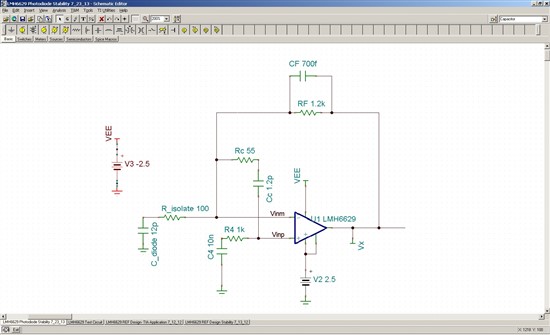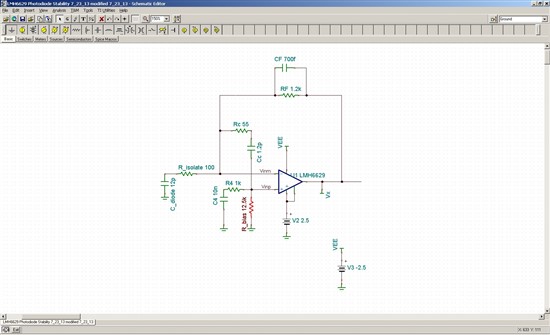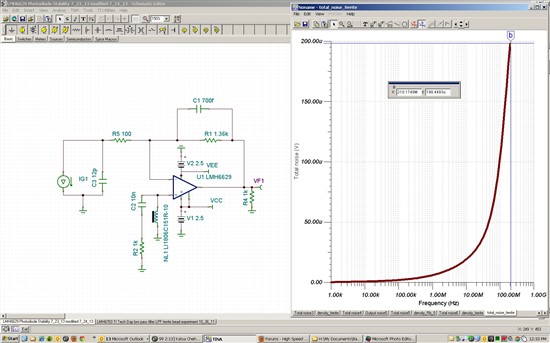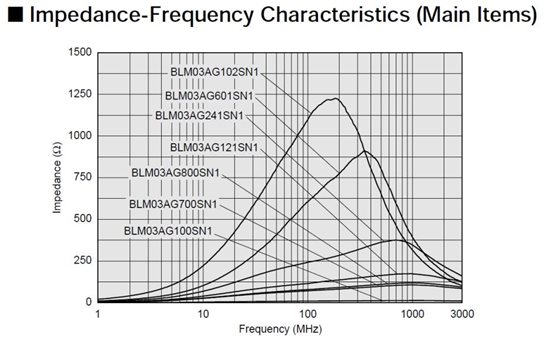Dear colleagues,
The LMH6629 has been configured as Trans impedance amplifier with the following conditions:
- photodiode capacitance 12pF
- Feedback resistor 1.36K ohm
- Non-inverting input grounded!
- ±2.5V power supplies
- COMP pin connected to V+ (high frequency mode)
- Power down pin floating (disconnected)
I already developed the board.
when I connect feedback capacitor Cf, the output is oscillating around 1 GHz.
I tried several values between 0.1pF to 1pF
Only when Cf cap is totally removed, the high frequency oscillation disappear and the stabilization of the loop achieved by means of a series resistor between the photodiode and inverting input.
I can’t understand this oscillation
Please advise!





